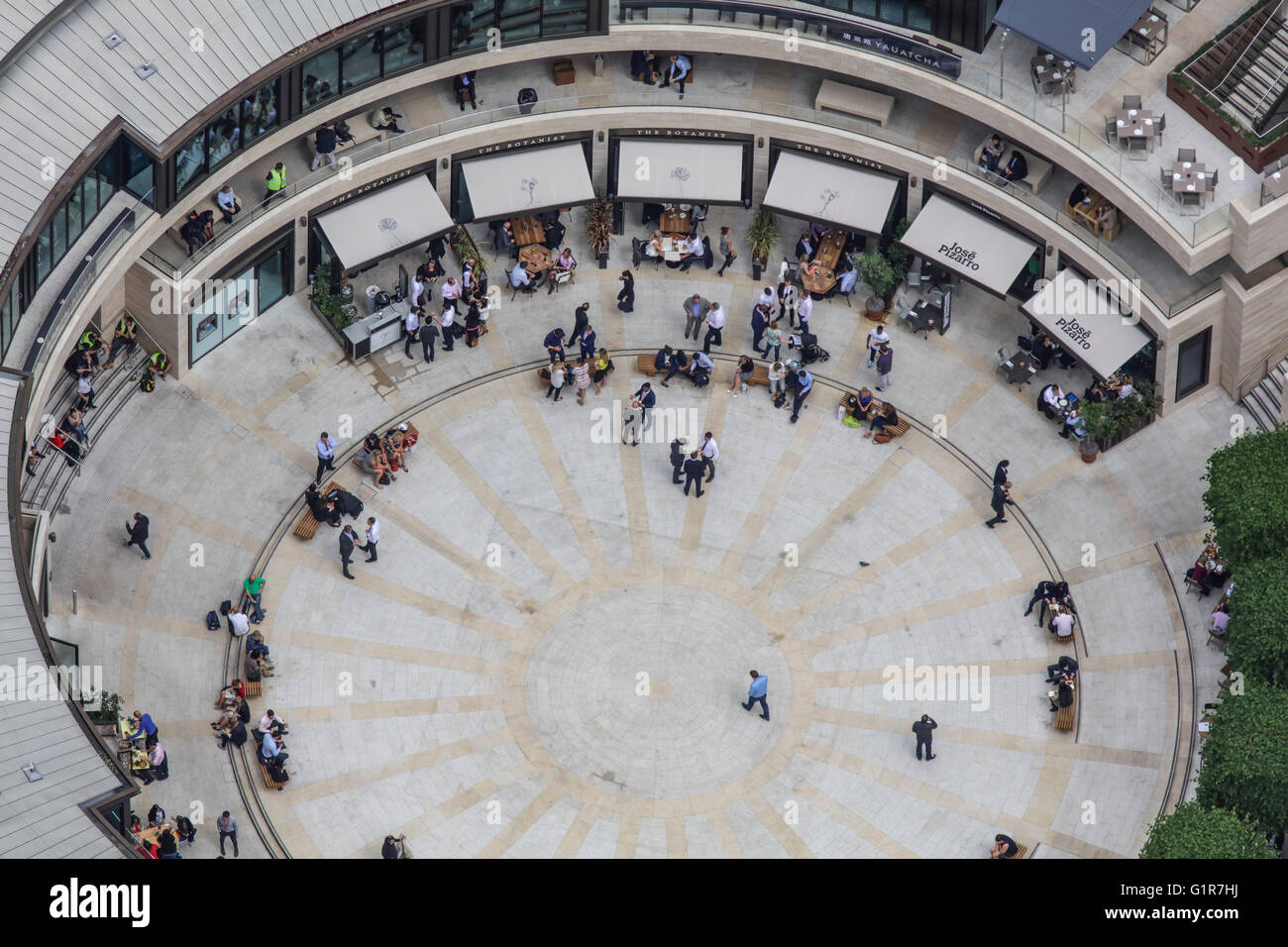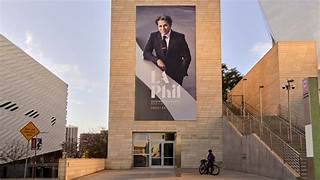Terry Farrell: Postmodern Icon and Master of Blending Classical and Contemporary Design
Terry FarrellTerry Farrell, a renowned British architect, is one of the most influential figures in postmodern architecture. Over his long and prolific career, Farrell has developed a reputation for his eclectic and highly imaginative designs, which blend classical elements with modern aesthetics. His buildings are bold, playful, and often controversial, standing out in urban environments for their unique blend of functionality and style.
Farrell is best known for his high-profile projects such as the MI6 Building and the Charing Cross Station in London. Through his postmodern approach, he has transformed the architectural landscape of the UK, contributing to the rise of a design philosophy that celebrates complexity, historicism, and symbolism. His work extends beyond individual buildings to city planning, making him one of the most significant figures in shaping contemporary British urbanism.
MI6 Building By Terry Farrell
CREATOR:AMEEN SAHBAN
CREATOR:AMEEN SAHBAN
Early Career and Architectural Influences
Terry Farrell was born in Sale, Manchester, in 1938. He studied architecture at Newcastle University and later completed his postgraduate studies at the University of Pennsylvania under the mentorship of the legendary modernist architect Louis Kahn. Despite Kahn's modernist influence, Farrell quickly broke away from the rigid simplicity of modernism, developing a fascination with postmodernism and its emphasis on historical references, ornamentation, and the interplay between classical and contemporary forms.
Terry Farrell with Louis KahIn 1965, Farrell co-founded Farrell/Grimshaw Architects with fellow architect Nicholas Grimshaw, another key figure in British postmodernism. Together, they explored new approaches to architecture, experimenting with bold forms, materials, and technologies. However, in 1980, Farrell established his own practice, Terry Farrell & Partners, where his postmodern vision fully took flight.
Defining Postmodernism: A Reaction to Modernism
Postmodernism in architecture emerged in the 1960s as a reaction against the sterile minimalism and functionalism of modernist design. While modernist architects such as Le Corbusier and Mies van der Rohe championed simplicity, abstraction, and the removal of ornamentation, postmodernists embraced complexity, symbolism, and a more playful approach to design.
For Farrell, postmodernism represented an opportunity to reconnect architecture with history and context. He believed that buildings should respond to their surroundings and reflect the cultural and social context in which they are situated. This philosophy can be seen throughout his work, where classical architectural forms such as arches, columns, and pediments are reinterpreted in innovative and often whimsical ways.
Farrell's designs are marked by their eclecticism and a sense of narrative. Rather than adhering to a strict set of rules, he embraced the idea that buildings should tell a story, drawing on a wide range of architectural traditions to create spaces that are both functional and visually engaging.
The MI6 Building: A Landmark of British Postmodernism
One of Terry Farrell's most iconic works is the MI6 Building in London, completed in 1994. Officially known as Vauxhall Cross, this building serves as the headquarters of the British Secret Intelligence Service (SIS), commonly referred to as MI6. Its fortress-like appearance and bold architectural language have made it one of the most recognizable structures in London.
Located on the banks of the River Thames, the MI6 Building is an imposing structure with a series of stepped terraces, pyramidal forms, and art-deco-inspired detailing. Farrell drew inspiration from a range of architectural styles, including Aztec and Mayan architecture, resulting in a building that is both futuristic and ancient in appearance. The fortress-like design reflects the building's secretive function, while its bold forms and monumental scale give it a commanding presence in the cityscape.
The building’s dramatic silhouette and its association with the James Bond film franchise—having appeared in several Bond movies—have further cemented its status as a cultural icon. However, the MI6 Building is more than just a visual spectacle; it is also a highly functional space designed to meet the security and operational needs of the British intelligence service.
Farrell's design for MI6 is a quintessential example of postmodernism at its finest—bold, playful, and rich in symbolism. The building's eclectic mix of references, from ancient civilizations to modern technologies, makes it a landmark of British postmodern architecture and a testament to Farrell's unique design philosophy.
Charing Cross Station: A Contemporary Reinterpretation of History
Another of Farrell's most celebrated works is the Charing Cross Station, completed in 1990. This project involved the redevelopment of the station and the construction of the Embankment Place office complex above the station’s platforms, creating a striking new addition to London’s skyline.
For the Charing Cross project, Farrell drew inspiration from classical architecture, particularly the Victorian and Edwardian styles that dominate the surrounding area. The centerpiece of the design is the massive, arched steel and glass canopy that covers the station platforms, a modern reinterpretation of traditional railway architecture. The canopy not only serves a practical purpose by sheltering the platforms but also creates a visually dramatic entrance to the station.
Above the station, Farrell designed the Embankment Place office complex, a postmodern structure that combines modern materials such as glass and steel with classical forms and detailing. The building’s stepped profile and central atrium echo classical architectural elements, while its glass façade gives it a contemporary edge.
Farrell’s Charing Cross redevelopment exemplifies his ability to blend old and new, creating a building that respects its historical context while introducing bold, contemporary design elements. This fusion of styles is a hallmark of Farrell’s approach to postmodernism, where classical forms are not merely replicated but reimagined for the modern era.
The Broadgate Development: Transforming Urban Spaces
Beyond individual buildings, Terry Farrell has played a significant role in shaping the urban fabric of London through his large-scale urban planning projects. One of his most notable contributions is the Broadgate Development, a major office and retail complex in the heart of the City of London, completed in the late 1980s and 1990s.
Broadgate DevelopmentCREATOR:AMEEN SAHBAN
Broadgate is an exemplar of Farrell’s urban design philosophy, which emphasizes the creation of public spaces and pedestrian-friendly environments. The development transformed a former railway yard into a vibrant business district, featuring a mix of offices, shops, restaurants, and public spaces. The centerpiece of the development is the Broadgate Circle, an open-air amphitheater that hosts events and provides a gathering place for the public.
Broadgate CircleCREATOR:AMEEN SAHBAN
In designing Broadgate, Farrell sought to create a sense of place and community in an area traditionally dominated by commerce. The development’s buildings feature a mix of postmodern and high-tech design elements, with glass and steel structures that are softened by classical forms and human-scale details. The result is an urban environment that feels both modern and inviting.
Terry Farrell’s Approach to Urbanism
Terry Farrell is not only known for his architectural designs but also for his influential work in urban planning. He has long advocated for contextual architecture—the idea that buildings should respond to their surroundings, both in terms of their design and their social and cultural context. He believes that architecture and urban planning should serve the people who use the spaces, creating environments that are not just functional but also inspiring and inclusive.
Farrell’s approach to urbanism is grounded in the belief that cities should be designed for people, not just cars or businesses. He has been a vocal advocate for pedestrian-friendly cities, the preservation of historic buildings, and the creation of public spaces that encourage social interaction. His urban design projects, such as the Greenwich Peninsula masterplan and the regeneration of Covent Garden, reflect this commitment to creating livable, human-scale environments in urban areas.
Greenwich PeninsulaLegacy and Influence
Terry Farrell’s work has left an indelible mark on the architectural landscape of the UK and beyond. His bold, imaginative designs have made him a leading figure in postmodern architecture, while his urban planning work has helped to shape the way cities are designed and experienced.
Farrell’s influence extends beyond his built projects; he has also been an outspoken advocate for architectural education and public engagement with design. In 2013, he was appointed by the UK government to lead the Farrell Review, a wide-ranging investigation into the future of architecture and the built environment in the UK. The review emphasized the importance of good design in shaping sustainable, livable cities and called for greater public involvement in the architectural process.
Farrell Review
CREATOR:AMEEN SAHBANIn conclusion, Terry Farrell’s unique blend of classical and contemporary design has made him one of the most important architects of his generation. His buildings, from the MI6 Building to Charing Cross Station, are celebrated for their bold forms, playful details, and ability to stand out in the urban environment while respecting their context. Through his work, Farrell has proven that architecture can be both functional and visually exciting, leaving a lasting legacy in the world of postmodern design.








.png)





![Terry Farrell [ British architect]](https://blogger.googleusercontent.com/img/b/R29vZ2xl/AVvXsEgF5Bc7-F6oyGHwVlcJfUVoN9PAph8ZIAQAVTMDZ0oOX0kIENEGN84Arj8wxKS666_yV2hRHMM4zlJ5gCJFBA1ttvrGBPrCNY0tZWfcuPl0aolt_szKpBjWtbLYutI4ivHBLrzZkj-wEk_l_1paoEEVkgnzCt7yvpHoDkhm63TxHxL45GUgV2OZVkwLYkWG/w100/11e81b6d-862f-4a23-a2d0-950d22063de0.png)



0 Comments